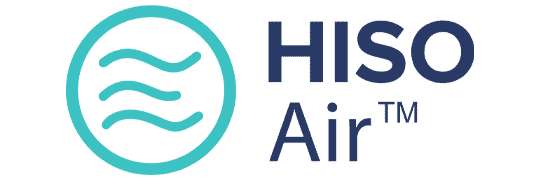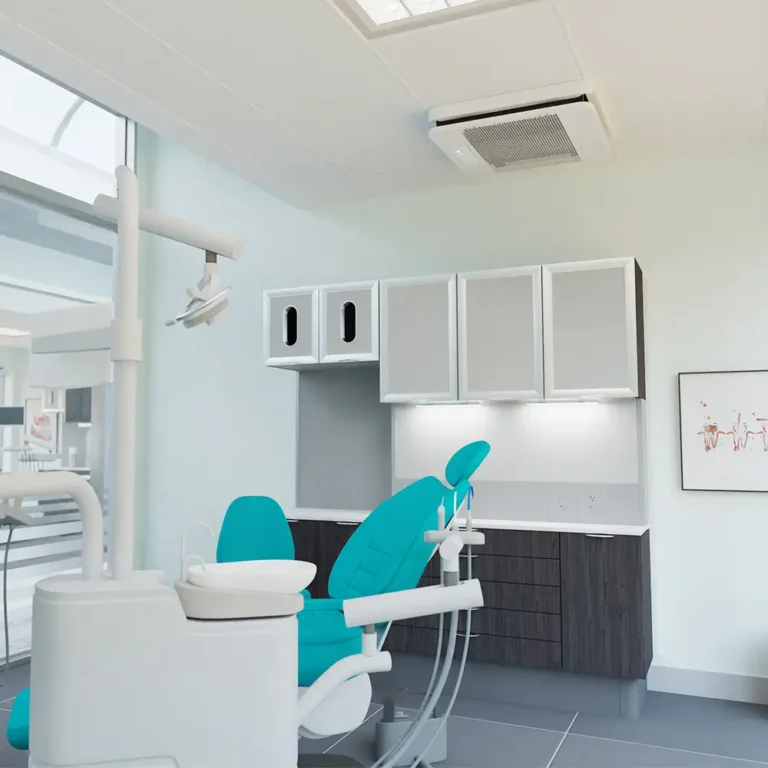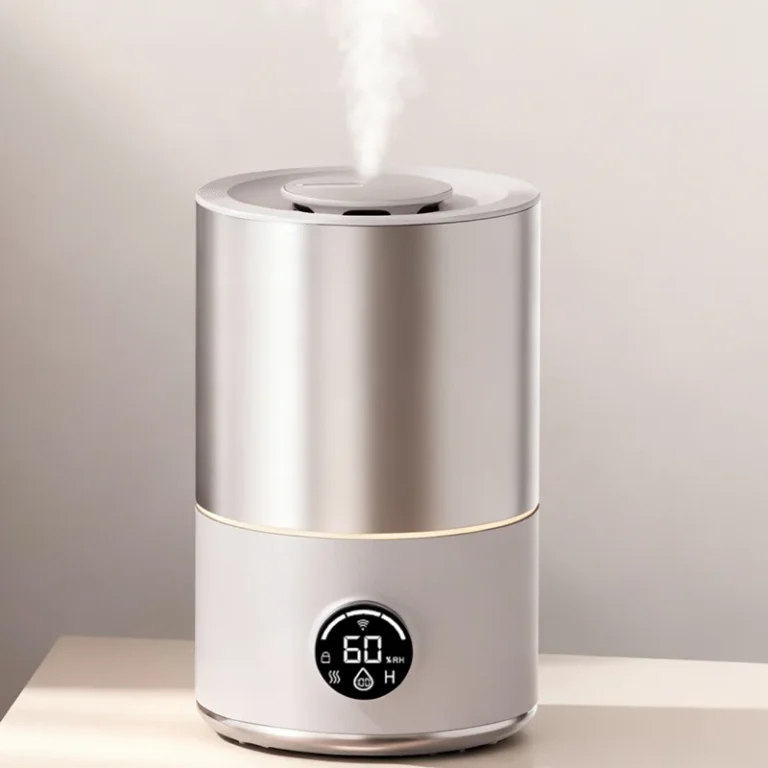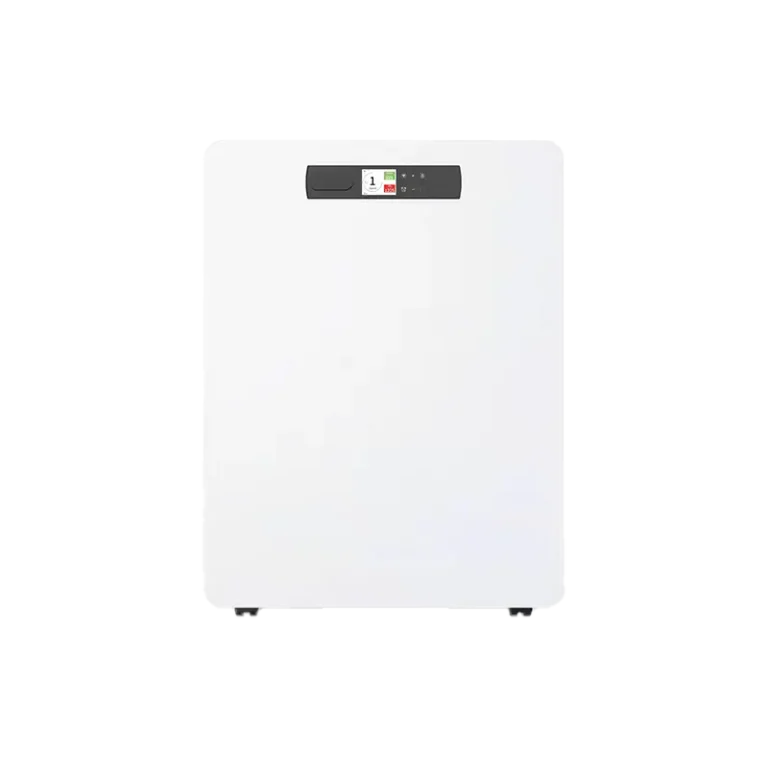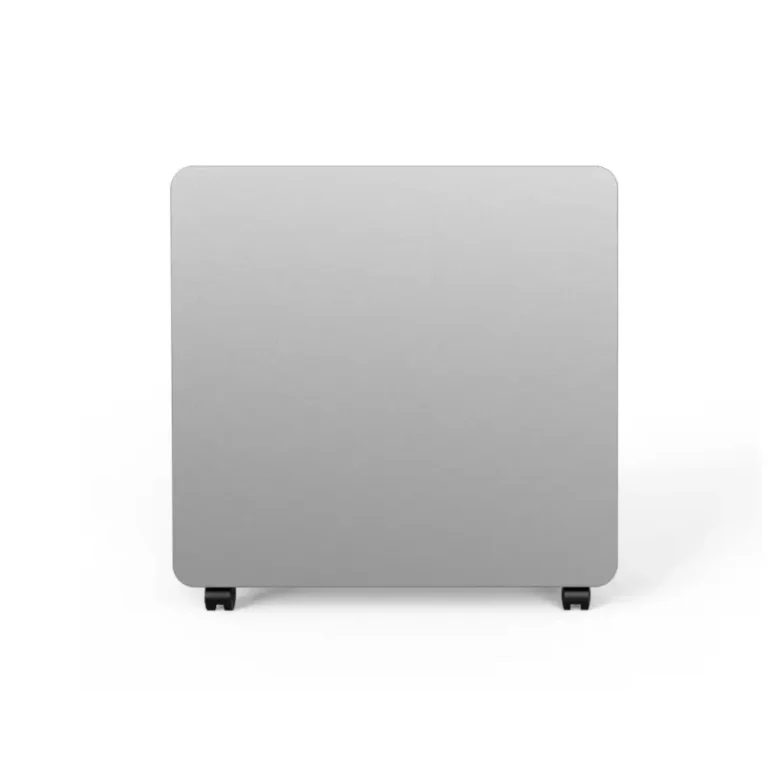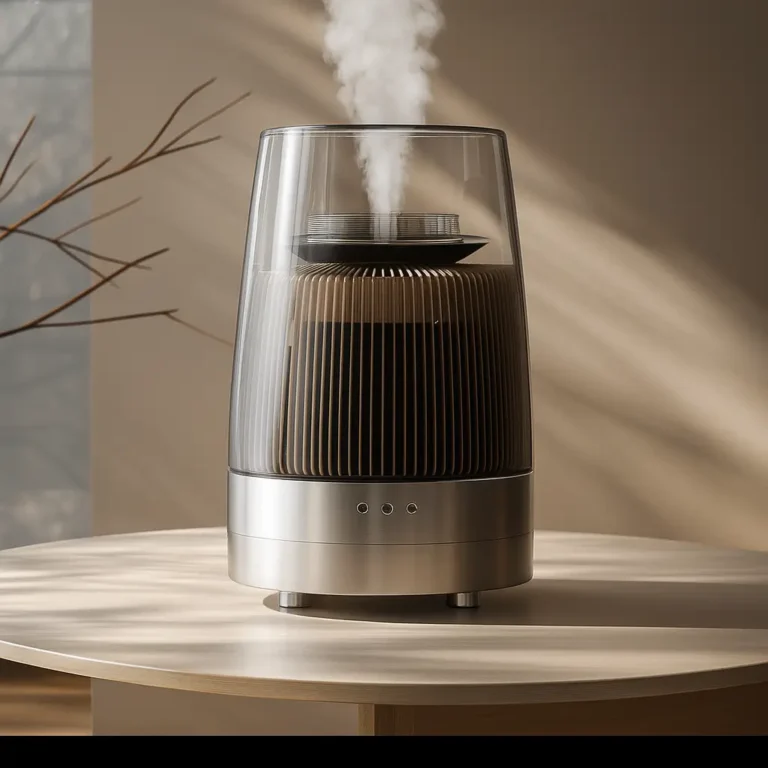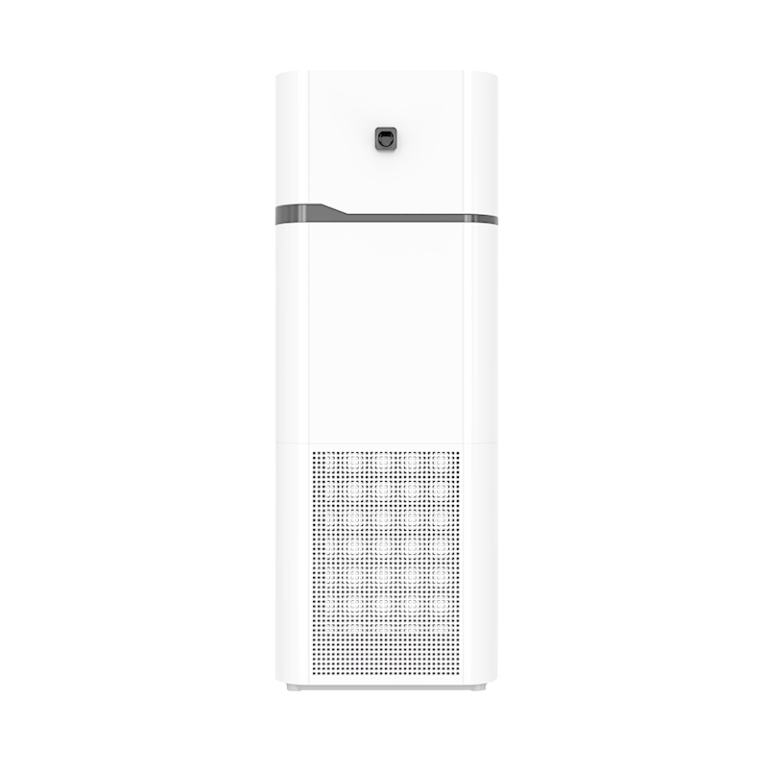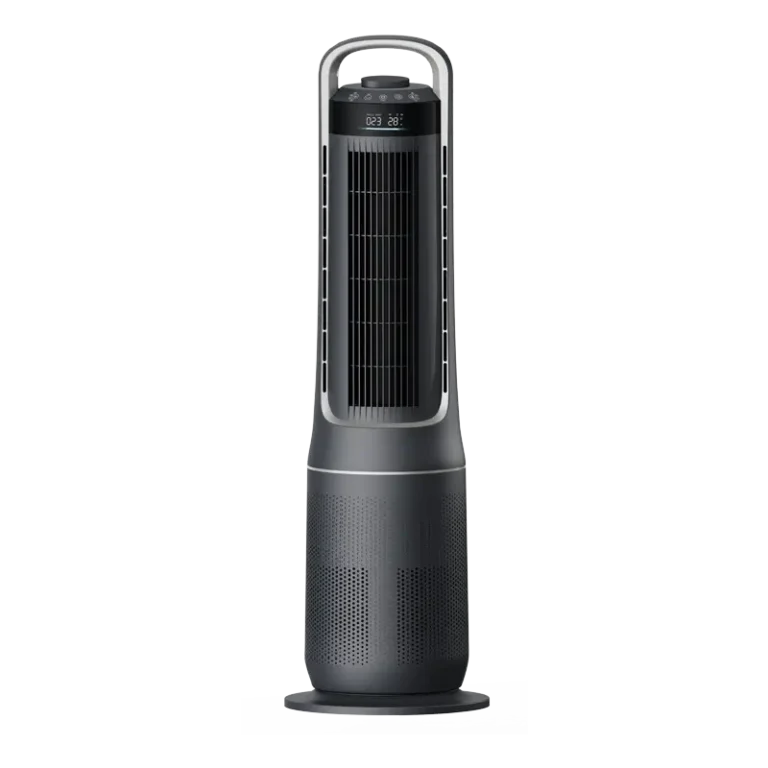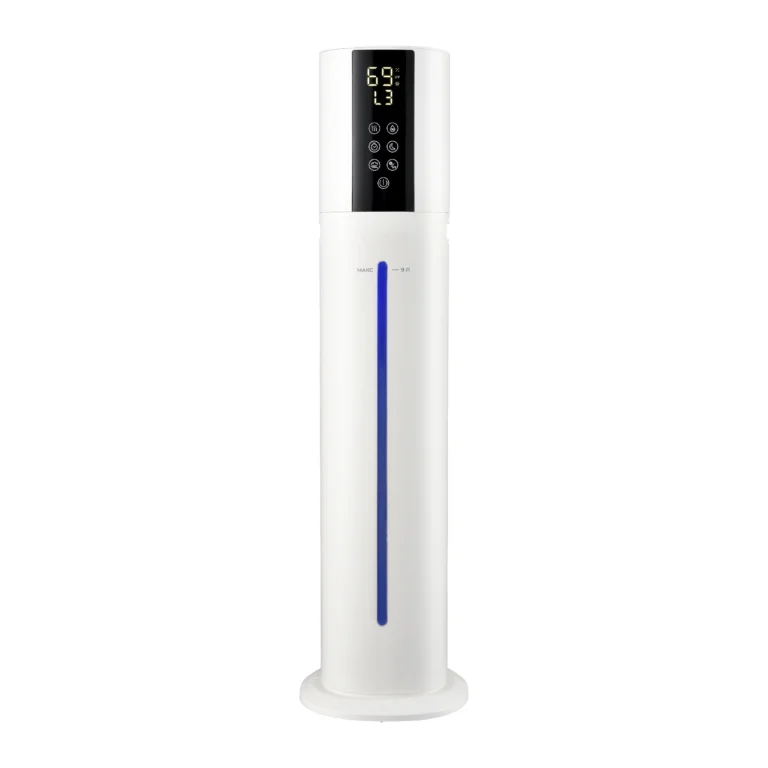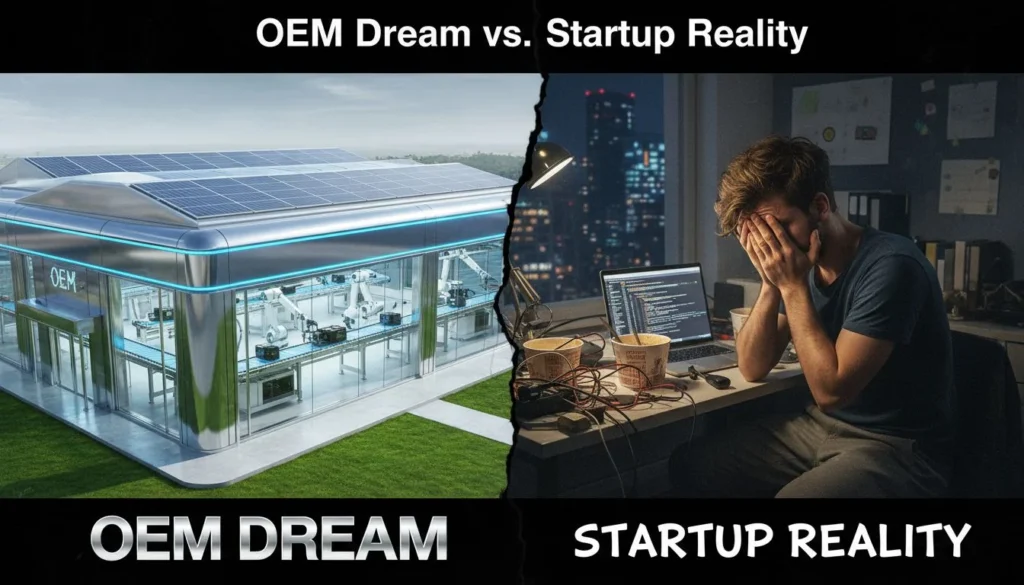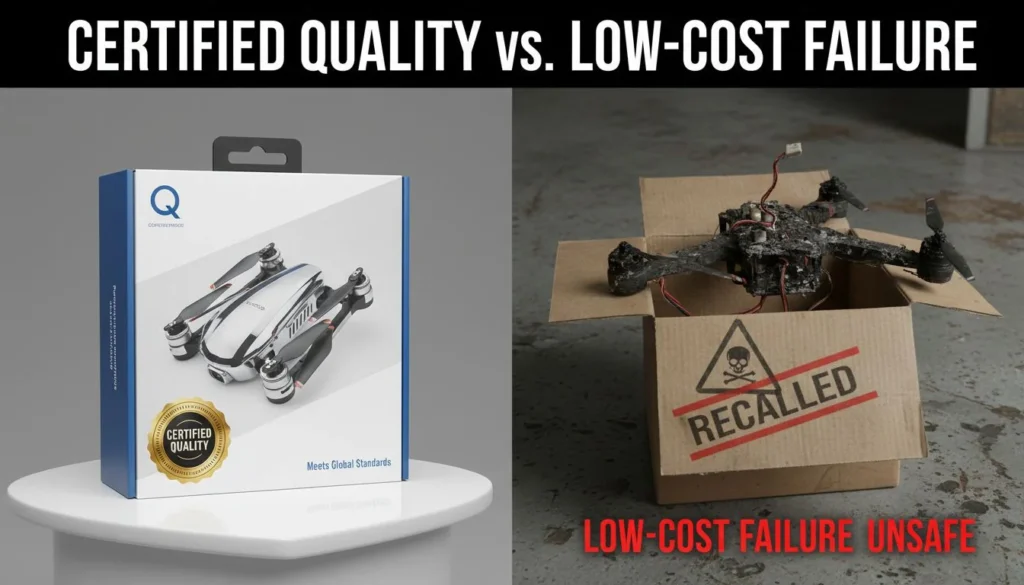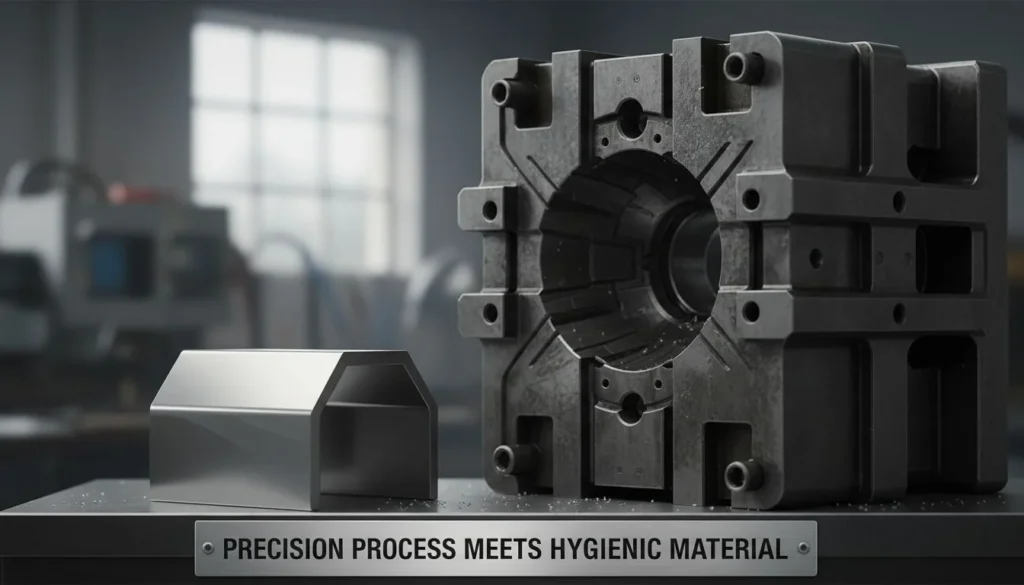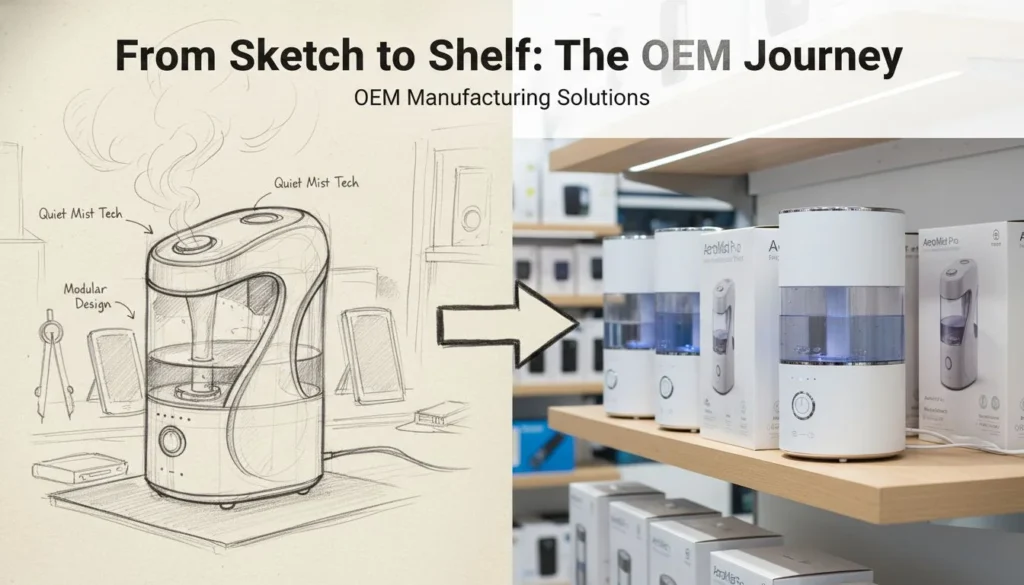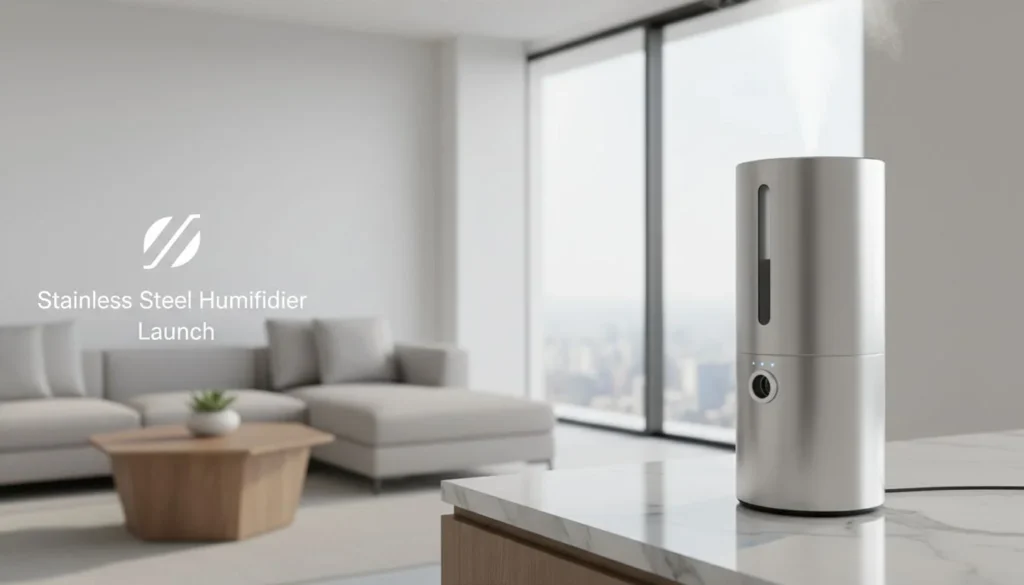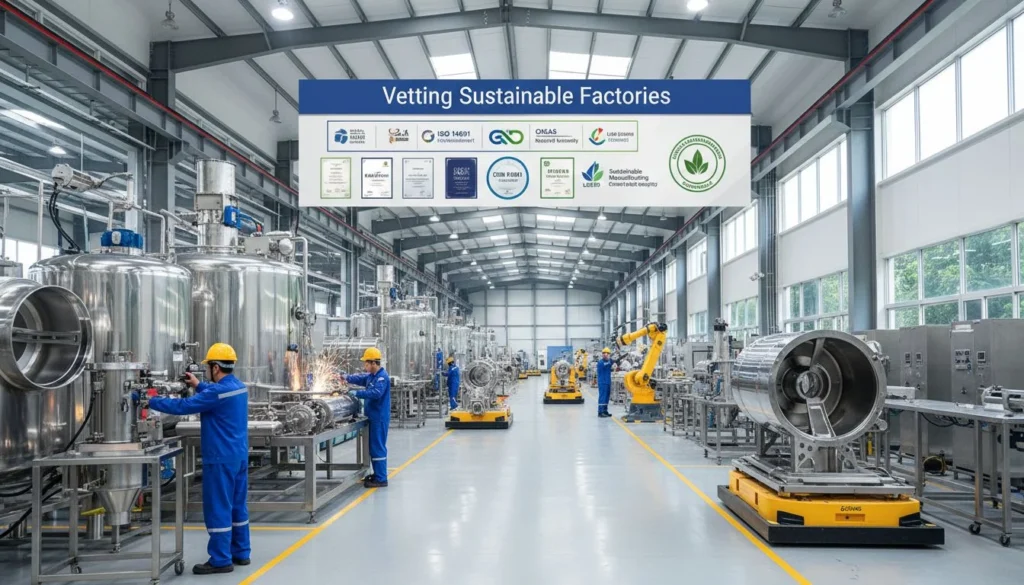The global supply chain landscape is in a constant state of flux, shaped by geopolitical shifts, technological advancements, and evolving consumer demands. As we approach 2025, businesses across all sectors are re-evaluating their supply chain resilience and efficiency. For the Indoor Air Quality (IAQ) industry, this re-evaluation is particularly critical. The increasing awareness of health and environmental factors has propelled IAQ solutions from niche products to essential components of modern living and working spaces. This shift necessitates robust, adaptable, and forward-thinking supply chain strategies.
Hisoair, with over two decades of expertise as an OEM/ODM Indoor Air Quality Solutions expert, stands at the forefront of this dynamic industry. Our commitment to delivering innovative and high-quality IAQ products, from concept to certified mass production, underscores the vital role of a well-managed supply chain. This blog post will delve into six strategic supply chain approaches that will define success in 2025, specifically tailored to the unique challenges and opportunities within the IAQ sector, and highlight how Hisoair's diverse service models—ODM, JDM, and Private Label—are inherently designed to leverage these strategies for our partners' success.
Understanding the IAQ Supply Chain Landscape
The Indoor Air Quality (IAQ) product supply chain presents a unique set of challenges and opportunities that differentiate it from other manufacturing sectors. The core of these challenges lies in the nature of IAQ products themselves: they are often complex, integrating various technologies (filtrazione, sensing, connectivity), and are subject to stringent quality and safety regulations. Key considerations include:
- Component Sourcing: IAQ devices rely on a diverse range of components, from advanced filtration media and sensors to electronic controls and connectivity modules. Sourcing these components globally requires navigating complex logistics, ensuring quality consistency, and managing potential supply disruptions.
- Quality Control and Compliance: Given the direct impact on human health, IAQ products must adhere to strict quality standards and regulatory compliance (e.g., certifications for air purification efficiency, safety standards for electrical components). This necessitates rigorous testing and validation throughout the supply chain.
- Rapid Technological Changes: The IAQ market is constantly evolving with new technologies, such as enhanced filtration methods, smart home integration, and AI-driven air quality monitoring. Supply chains must be agile enough to incorporate these innovations quickly, requiring flexible design and manufacturing processes.
- Demand Volatility: Demand for IAQ products can be influenced by seasonal factors (e.g., allergy seasons, winter pollution spikes), public health crises, or even local environmental events. This variability requires supply chains that can rapidly scale up or down production.
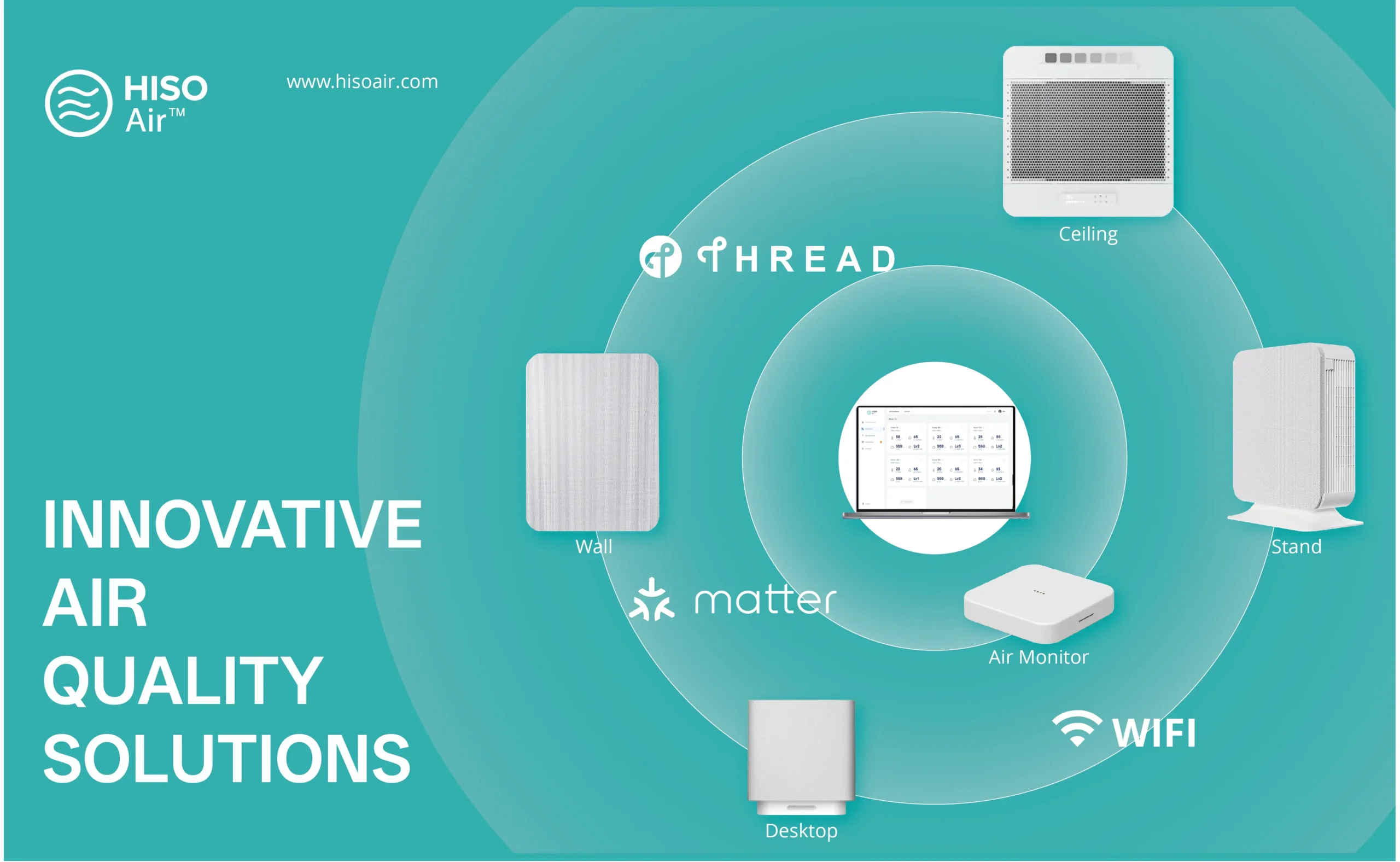
Hisoair's business model, encompassing Original Design Manufacturing (ODM), Joint Design Manufacturing (JDM), and Private Label services, is specifically structured to address these complexities. Our ODM service provides comprehensive solutions from concept to mass production, handling everything from industrial design to tooling and pilot production. JDM involves a collaborative approach where we co-invest in tooling and work closely with clients on design while they retain control over industrial design and IP. The Private Label service allows clients to quickly launch their brands by customizing proven platforms with their logos, color palettes, and packaging. Each of these models requires a nuanced supply chain approach, which we will explore in the context of the six strategic supply chain strategies.
The 6 Strategic Supply Chain Strategies for 2025 (Tailored for IAQ)
1. Efficient Flow: Streamlining for Predictable IAQ Demand
Concept: The Efficient Flow strategy is designed for products with steady and predictable demand. Its core principle is to ensure a smooth, continuous flow of materials and products through the supply chain, with all components working in harmony to deliver the product at the right time and place. This strategy heavily relies on precise inventory management and accurate demand forecasting to maintain optimal inventory levels and minimize waste.
IAQ Application: For the IAQ industry, this strategy is particularly applicable to standard air purifiers, common replacement filters, or widely used components that experience consistent market needs. For instance, basic HEPA filters or activated carbon filters, which are universally required across many IAQ devices, can benefit significantly from an efficient flow approach. The focus here is on optimizing mass production, ensuring that manufacturing lines run continuously and efficiently, and that distribution channels are well-oiled to meet steady consumer demand. Communication up and down the supply network is critical, fostering strong partnerships with vendors who can consistently deliver high-quality components at scale.
Hisoair Relevance: Hisoair's Original Design Manufacturing (ODM) and Private Label services are prime examples of how an efficient flow strategy can be leveraged. For partners seeking high-volume, standardized IAQ products, Hisoair's established production lines and robust supply network ensure a seamless and cost-effective manufacturing process. By streamlining the supply chain for these predictable products, Hisoair enables its clients to consistently meet market demand, maintain competitive pricing, and focus on their brand development and sales efforts, knowing their product supply is secure and efficient.
2. Efficient Cost: Optimizing for Value in IAQ Production
Concept: The Efficient Cost strategy prioritizes the reduction of expenses at every stage of the supply chain. This involves making choices that drive down the overall cost of production, from sourcing raw materials to manufacturing processes and logistics. While cost is the primary driver, it's crucial to balance this with maintaining product quality and meeting market expectations.
IAQ Application: In the IAQ sector, implementing an efficient cost strategy means meticulously evaluating every input and process. This could involve sourcing cost-effective yet high-quality raw materials for casings, internal components, or filtration media. It also extends to optimizing manufacturing processes through lean methodologies, automation, and economies of scale to reduce per-unit production costs. Efficient logistics, including optimized shipping routes and warehousing, further contribute to cost savings. The challenge lies in achieving these cost reductions without compromising the performance, safety, or regulatory compliance of IAQ products, which are critical for consumer trust and health.
Hisoair Relevance: Hisoair's extensive experience in manufacturing and its established supplier relationships allow it to offer highly cost-efficient solutions for its ODM and Private Label clients. Our ability to optimize material procurement, streamline production, and manage logistics effectively means that partners can achieve competitive pricing for their IAQ products. This is particularly valuable in a market where price sensitivity can be a significant factor. Hisoair's expertise ensures that cost efficiencies are realized through smart operational choices, rather than through compromises on the essential quality and efficacy of the indoor air quality solutions.
3. Efficient Speed: Agile Response to Dynamic IAQ Markets
Concept: The Efficient Speed strategy, often referred to as an agile supply chain strategy, emphasizes rapid time-to-market and the ability to quickly adapt to changing product demands or market trends. In this approach, the speed of response and flexibility are paramount, often taking precedence over minimizing costs. It involves working with vendors and processes that can facilitate quick changes and rapid deployment.
IAQ Application: The IAQ market is characterized by rapid technological advancements and evolving consumer preferences. New filtration technologies, smart features, IoT integration, and design trends emerge frequently. An efficient speed strategy allows IAQ companies to quickly prototype, source new components, and manufacture products incorporating these innovations. For example, if a new virus strain or pollutant becomes a public concern, the ability to rapidly develop and launch air purifiers with enhanced filtration capabilities becomes a significant competitive advantage. This requires suppliers who can provide components with short lead times and manufacturing processes that are flexible enough to accommodate design changes quickly.
Hisoair Relevance: Hisoair's Joint Design Manufacturing (JDM) model is perfectly aligned with the Efficient Speed strategy. In JDM, Hisoair collaborates closely with clients, allowing for rapid iteration and adaptation of designs. This collaborative approach, combined with Hisoair's agile manufacturing capabilities, enables partners to quickly bring innovative IAQ products to market. Whether it's integrating the latest sensor technology or responding to a sudden shift in design aesthetics, Hisoair's JDM service ensures that clients can capitalize on emerging trends and maintain a leading edge in the fast-paced IAQ industry.

4. Responsive to Customization: Tailoring IAQ Solutions
Concept: This strategy is ideal for products that require significant customization or configuration to meet individual customer needs. It focuses on building a supply chain that can efficiently handle unique, often low-volume, production runs. Key elements include modular design, flexible manufacturing processes, and suppliers capable of providing specialized components or services.
IAQ Application: In the IAQ sector, customization can range from bespoke air purification systems for commercial buildings with specific ventilation requirements to specialized filters for industrial applications, or even unique aesthetic designs for high-end residential markets. For example, a hospital might require an air purification system tailored to remove specific airborne pathogens, or a luxury hotel might need units that seamlessly blend with its interior design. This strategy emphasizes the ability to integrate standard parts with custom elements, often leveraging advanced manufacturing techniques and automation to ensure efficiency despite the low volume of customized components.
Hisoair Relevance: Hisoair's ODM and JDM services are inherently designed to be responsive to customization. Our expertise in product development allows us to work with clients to create tailored IAQ solutions, from specific functional features to unique branding and design elements. Whether it's developing a new air purifier with a distinct form factor, integrating specialized sensors for particular pollutants, or adapting existing platforms for niche applications, Hisoair's flexible manufacturing and engineering capabilities ensure that even highly customized requirements can be met efficiently and to the highest quality standards. This capability is a significant differentiator, allowing Hisoair's partners to serve specialized markets and command premium value.
5. Responsive to Demand Fluctuation: Adapting to IAQ Market Swings
Concept: This strategy is crucial for industries characterized by variable or unpredictable demand. It focuses on building a supply chain with the flexibility to rapidly scale production up or down. This often involves maintaining higher inventory levels at various stages, establishing strong relationships with suppliers who can accommodate fluctuating orders, and having agile production capacities.
IAQ Application: The demand for IAQ products can be highly volatile. For instance, sales of air purifiers often surge during allergy seasons, periods of high outdoor pollution (e.g., wildfires), or public health crises. Conversely, demand might dip during quieter periods. A supply chain responsive to demand fluctuation ensures that manufacturers can meet these sudden spikes without stockouts and can scale back production efficiently during troughs to avoid excess inventory. This requires a robust network of suppliers who can quickly increase or decrease their output and manufacturing facilities that can adjust production lines with minimal disruption.
Hisoair Relevance: Hisoair's operational flexibility and strong supplier relationships are key to its ability to manage production volumes effectively for its partners. By working closely with our clients and understanding their market forecasts, Hisoair can strategically manage inventory of critical components and adjust manufacturing schedules to align with fluctuating demand. This capability provides a significant advantage, allowing Hisoair's partners to capitalize on peak demand periods without overcommitting resources during slower times, thereby optimizing their inventory costs and ensuring consistent product availability in the dynamic IAQ market.
6. Responsive to Customer Problems: Solution-Oriented IAQ Supply Chains
Concept: This strategy is adopted when the primary focus is on solving specific, often complex, customer problems with unique, high-value solutions. It moves beyond standard product offerings to a more consultative and problem-solving approach. Demand is often unpredictable, and the emphasis is on delivering bespoke solutions with unique features, rather than mass production. This requires close collaboration between design, manufacturing, and the customer, and a focus on building capacity rather than just inventory.
IAQ Application: In the IAQ industry, this strategy applies to situations where clients face specific, challenging air quality issues that cannot be addressed by off-the-shelf products. Examples include designing specialized air filtration systems for industrial facilities dealing with hazardous airborne chemicals, developing bespoke ventilation solutions for cleanrooms, or creating integrated IAQ management systems for large commercial complexes with unique architectural constraints. In these scenarios, the supply chain is driven by the specific requirements of the problem, emphasizing R&D, custom component sourcing, and highly specialized manufacturing processes. The focus is on delivering a comprehensive solution that may involve unique product features, installation, and ongoing service.
Hisoair Relevance: Hisoair's deep expertise in Indoor Air Quality solutions and its strong R&D capabilities position it perfectly for a
Responsive to Customer Problems strategy. We work closely with clients to understand their specific air quality challenges, then leverage our engineering and manufacturing prowess to develop custom-tailored products. This might involve designing new filtration modules, integrating advanced sensor arrays, or creating unique form factors to fit specific environments. Hisoair’s strength lies in its ability to move beyond standard product offerings and provide comprehensive, solution-oriented IAQ systems, ensuring that even the most complex air quality problems are effectively addressed through a highly responsive and collaborative supply chain approach.

Implementing These Strategies: Key Considerations for IAQ Businesses
Successfully implementing these strategic supply chain approaches in the IAQ industry requires careful consideration of several overarching factors:
-
Technology Adoption (AI, IoT for Forecasting and Tracking): The integration of Artificial Intelligence (AI) and the Internet of Things (IoT) is no longer a luxury but a necessity for modern supply chains. AI-driven analytics can significantly enhance demand forecasting accuracy, identify potential disruptions, and optimize inventory levels. IoT devices can provide real-time tracking of goods, monitor environmental conditions during transit, and offer predictive maintenance insights for manufacturing equipment. For IAQ businesses, this means leveraging data from smart air purifiers, environmental sensors, and production lines to create a more transparent, efficient, and responsive supply chain.
-
Supplier Relationship Management and Diversification: Building strong, collaborative relationships with suppliers is paramount. This involves not just negotiating favorable terms but also fostering partnerships that promote transparency, shared risk, and mutual growth. Furthermore, diversifying the supplier base across different geographical regions and multiple vendors for critical components can significantly mitigate risks associated with single-source dependencies, geopolitical tensions, or natural disasters. For IAQ, this means ensuring a stable supply of specialized filters, sensors, and electronic components from reliable sources globally.
-
Sustainability and Ethical Sourcing in IAQ Supply Chains: As environmental consciousness grows, consumers and regulations increasingly demand sustainable and ethically sourced products. For IAQ solutions, this translates to scrutinizing the entire supply chain for environmental impact (e.g., energy consumption in manufacturing, waste generation, carbon footprint of logistics) and ethical labor practices. Implementing sustainable practices, such as using recycled materials, designing for recyclability, and optimizing transportation, not only meets regulatory requirements but also enhances brand reputation and appeals to a growing segment of environmentally conscious consumers.
-
Risk Management and Resilience Building: The past few years have underscored the vulnerability of global supply chains to unforeseen disruptions. Developing robust risk management frameworks involves identifying potential risks (e.g., natural disasters, pandemics, trade wars, cyberattacks), assessing their potential impact, and developing contingency plans. Building resilience means designing supply chains that can absorb shocks, adapt quickly, and recover efficiently. This could involve maintaining strategic buffer stocks, having alternative manufacturing sites, or implementing agile response protocols. For IAQ businesses, ensuring continuous product availability, especially during health crises, is not just a business imperative but a public health responsibility.
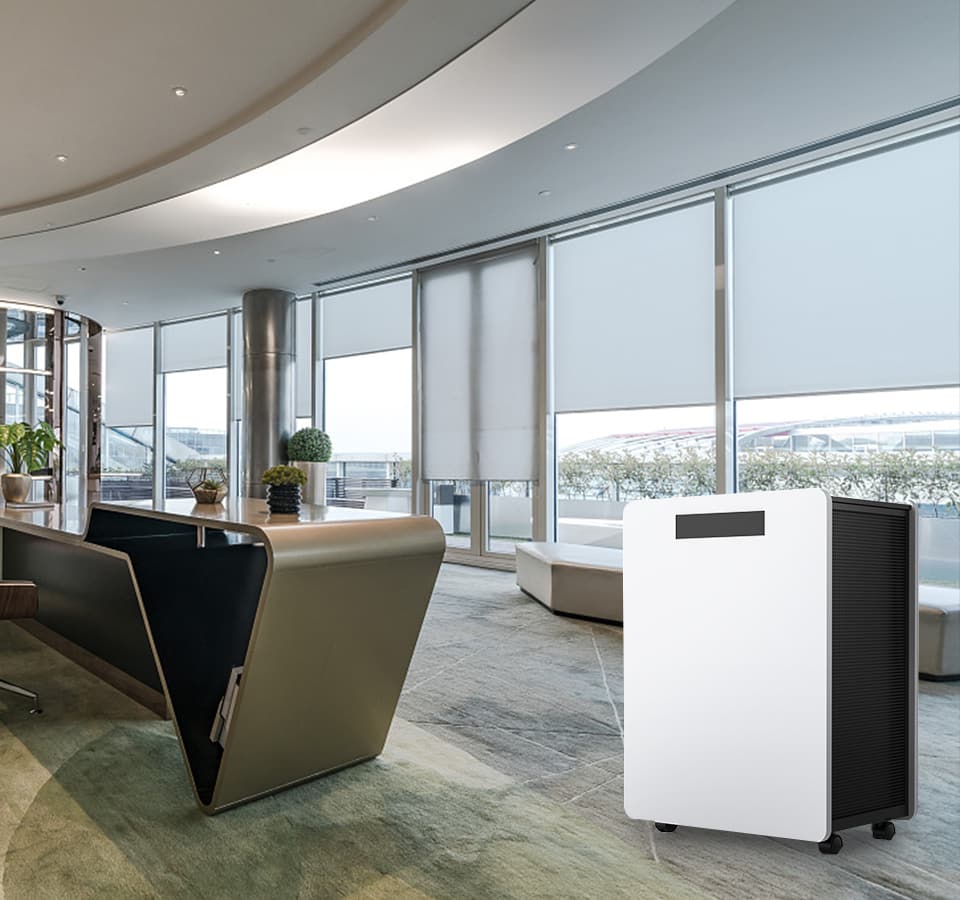
Conclusione
In conclusion, the future of the Indoor Air Quality industry is inextricably linked to the strategic evolution of its supply chains. As we move into 2025, the ability to adapt, innovate, and build resilience will be the hallmarks of successful IAQ businesses. The six strategic supply chain approaches Efficient Flow, Efficient Cost, Efficient Speed, Responsive to Customization, Responsive to Demand Fluctuation, and Responsive to Customer Problems provide a comprehensive framework for navigating the complexities of the modern market.
Hisoair, with its deep industry knowledge and flexible service models (ODM, JDM, Private Label), is uniquely positioned to empower its partners in implementing these strategies. Our commitment to quality, efficiency, and innovation ensures that our clients can not only meet the current demands of the IAQ market but also anticipate and adapt to future challenges. By leveraging these strategic approaches, Hisoair and its partners will continue to deliver cutting-edge indoor air quality solutions, contributing to healthier and safer environments worldwide.
